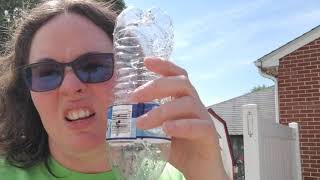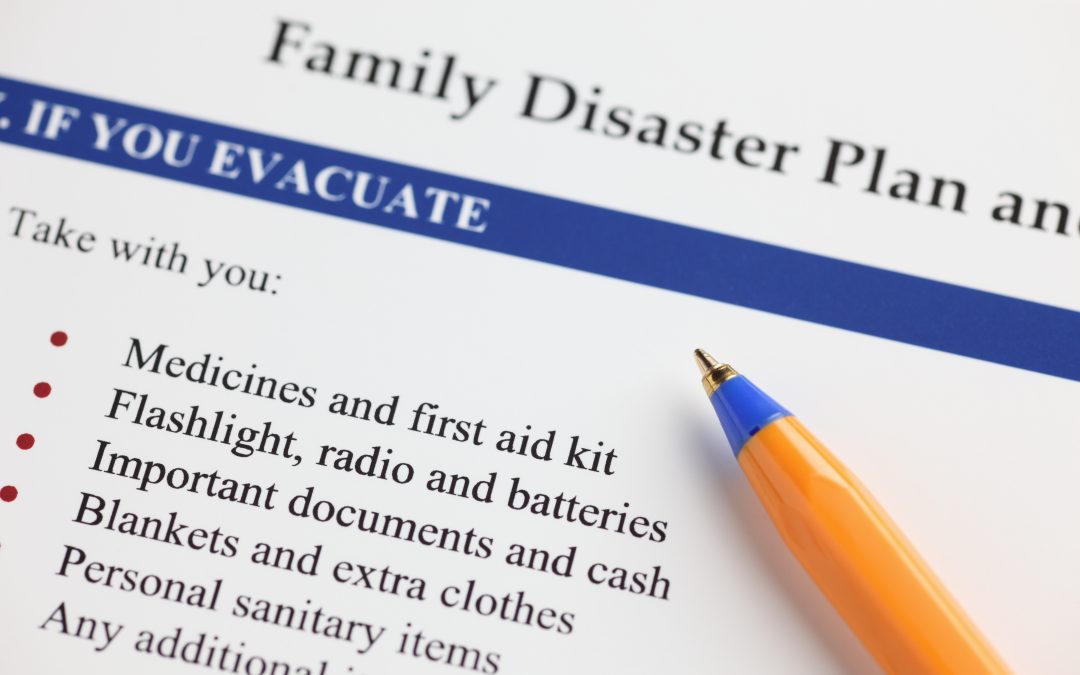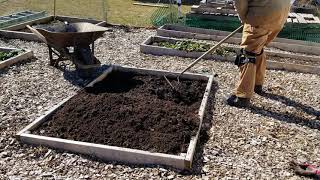
Simple Water Bottle Hack
It’s been way too long since we’ve posted. But we’re back with lots to share.

It’s been way too long since we’ve posted. But we’re back with lots to share.


While Sam is nursing a hand that she managed to scrape a few layers of skin off while trying to help pound a few stakes, I thought I’d share a bit of our philosophy behind “Beyond TP and Milk.”
This past weekend, I saw a news report about average folks becoming preppers. Well, not like we think of as survivalists and preppers, but realizing that they should consider how they might be more prepared after surviving Covid lockdowns, political unrest, and various trials of Mother Nature.
Here’s the news video link from CBSN aired on March 12, 2021:
Another one from CBSN aired on December 30, 2020, was the piece about buying chicks to have eggs for their family in the future:
Both of these videos show the average person beginning to re-think preparedness in relation to their families, ordinary people having experienced some pretty extraordinary circumstances during the past year.
… we aren’t necessarily talking about guns, a hidden hideout in the woods, or years of food storage. Most of us are unable, or choose not, to do that. But we have experienced empty grocery shelves and the change of lifestyle resulting from the lockdowns of the past year – job upheavals, financial situations in turmoil, homeschooling our children, delayed product deliveries, and more. Many folks had to run from fires, floods, or deal with snowstorms, and loss of utilities.
As a result of these experiences, many more of us are trying to learn new ways to be better prepared. No more rushing to the grocery store in the eleventh hour. No more fear of ‘what will I feed my family?’ No more waiting for the customary stores inventory-on-demand, waiting for ships and planes that are behind schedules, delivery delays by the post office, and other things out of our control.
I often ask folks if they are prepared to grab a “go-bag” in case of impending emergency? What would they include if they didn’t know when, or if, they would return to their home? So the basics begin there. Here are a few items to consider:
Of course, there are a host of other items you may consider, but that’s a good start. There are many online sites that will give you lists as well as your county emergency services, etc.
Sam’s focus has been to have you think about your family’s well-being, especially in food sustainability. A garden that gives you healthy, fresh foods and offers a variety that can be canned or frozen. A bounty that can give you a sense of security no matter what the grocery stores have available. But we both know that along with these items for our own families, a bit of abundance gives us items to barter. Remember, when times are tough, having something to ‘trade’ can make a tough situation a bit more comfortable.
As we hope for a loosening of all the ‘safety’ precautions in coming months (or years), it’s easy to think the rough times are behind us. If that is how you’re thinking, STOP! 2019 was an amazing lesson. It can happen again. It can happen anytime. We can throw our arms up and say, “Oh, I didn’t think it could happen to me.” Or… we can learn some lessons and figure out at least a few basics that will allow our families to feel a bit more secure.
I highly recommend including everyone in the planning. Children can be quite creative and I think it adds to their own sense of security. They can have a backpack of items that will be important to them if they had to get out of the house fast, or if the electricity was out and they had to entertain themselves. It also can give children a sense of control by choosing what matters to them. You can even play a game and have them use their backpack of items for a day or a weekend to test their choices.
Preparedness is not fear. It’s the opposite. It’s being ready. So don’t forget the lessons you learned during the past year. Consider how you might make a similar situation safer and more comfortable by being prepared.
Between us, we have over 100-years of experience and Sam’s only 39! If you enjoy our life hacks and simple common sense approaches to sustainability and everyday life, please spread the word.

The weather has been awesome here in Maryland this week. So we have been preparing our raised beds for spring.
Every year we get a load of mushroom soil. Actually, we get like five cubic yards of it. It’s a lot!
Here’s our approach:
Bob, my husband, digs down to the bottom of one side of the bed in order to dump the mushroom soil into the side of the raised bed. Then we’re going to mix the soils together, the existing soil with the mushroom soil in order to create a lovely nutrient-rich mixture for our plants.
Actually, the first year we just dumped it on top and spread it around. And we did not have as much success. But this year he had actually spread all the soil in the bed to one side and added the mushroom soil. Then he was able to mix it far more efficiently. The mix is now much more nutrient-dense.
When we go to plant our seedlings in a few weeks, what we’ll end up doing is just put a bit of worm castings and some other little fertilizers right in the holes. It’ll be yummy deliciousness for all of our plants that we’re going to be putting in here.
Between us, we have over 100-years of experience and Sam’s only 39! If you enjoy our life hacks and simple common sense approaches to sustainability and everyday life, please spread the word.

So why am I here with the pitchfork in front of what looks like a pile of dung? Well, it’s because I am!
Mushroom soil is really common where I live and it’s great in my garden. Let’s talk about some mushrooms.
We make raised beds here at our little house and we use the soil that’s already here. But we have to amend it because we have a clay mix.
So in order to do that and not have to pay a ton of money to get lots and lots of fancy soil delivered by a fancy place, we’ve decided to amend our soil with mushroom gold. We’ve used that every year – for about a hundred bucks. Boom! And it’s great stuff. Local companies around where we live take animal manure, animal waste, and mix it with old food scraps, creating this beautiful soil mixture that obviously mushrooms used at one point to grow.
You can see even see some of the straw and the wood that’s in it! In our garden beds, it adds those rich nitrates and nutrients to the soil. It provides luscious food for OUR food to continue to grow. We bought 3 or 4 cubic yards for $100. Every year this guy comes back willingly and this mushroom gold helps us grow abundant crops.
Between us, we have over 100-years of experience and Sam’s only 39! If you enjoy our life hacks and simple common sense approaches to sustainability and everyday life, please spread the word.

The other day I noticed a tree company in our neighborhood. They were there to cut somebody’s tree down, some landscaping. It’s lovely. They’re taking care of something that’s necessary in our neighborhood.
Well, the irony is those tree companies have to pay to get rid of the wet mulch. This is not hot yet. It’s just wood chips that are fresh-cut trees. On an actual garden plot, it can be detrimental.
What I do is I use this wet mulch for around our gardens?
It’s great to use for the walkway between our garden beds and it’s lovely. It’s super easy. We put them around our chicken coop. It makes our yard smell lovely all year long and it’s beautiful. And the kicker, it was free. All I had to do was walk down the street and ask the guy, “Do you get rid of your wood chips at the end of the day? And if so, how much does it cost?”
And he’s like, “It’s free because I won’t have to pay for it.”
Check out this article for ways you can safely use this free mulch (wood chips) around your home and garden.
So the fabulousness is, if you’re looking for cheap effective mulch (that’s not necessarily mulch yet), ask a local person who is having a tree cut down if you can have the wood chips. I’m going to guarantee you that tree service is going to be much happier to get rid of the wood chips on your lawn than to have to go pay to have them turned into mulch, through a drying process and a variety of other methods.
So make sure you click that like, subscribe, whatever social media shenanigans you use. Then check your neighborhood to get your FREE wood chips/mulch!
Between us, we have over 100-years of experience and Sam’s only 39! If you enjoy our life hacks and simple common sense approaches to sustainability and everyday life, please spread the word.

Hi, Sam here. I’m going to actually walk you through this very simple step-by-step process of starting your seeds in this really cheap and effective manner. So like I told you last time, I got these packets from my local grocery store and I had four packs of 24 cells. They were really, really inexpensive. Remember these were super easy. They’re super cheap. And they will last me a couple of years’ time. So we are going to plant our leafy greens, just a couple of varieties to get them started so that when I am ready to put them outside, I will have them ready to rock and roll.
Key Tip: Check your seeds every day so they don’t dry out, which will stress your seeds and hinder growth.
Next time we talk, we’ll talk about other things I don’t like – called the determinant and indeterminant tomatoes. They have screwed me over many years in a row. So until next time, Sam, Sam Groff, from Beyond TP and Milk. Be sure to like, share, join our e-mail list, and start your seeds!